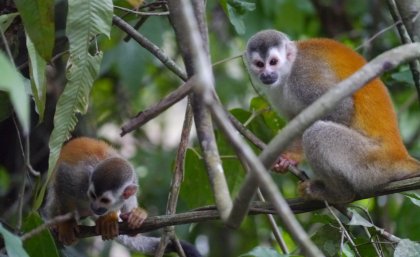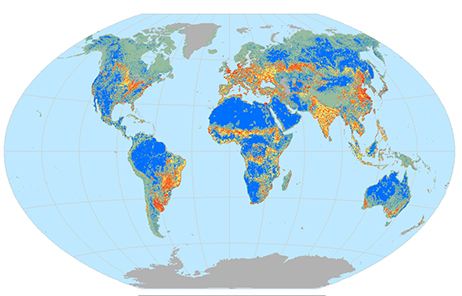MM from Switzerland.jpg?itok=02IQT6VN)
Researchers have long assumed habitat fragmentation contributes to animal extinction risk, but until now, they have not been able to measure it on a global scale for a major group of animals.
In a first-of-its-kind study, a research team led by Colorado State University (CSU), and involving research from The University of Queensland, successfully measured habitat fragmentation for more than 4000 species of land-dwelling mammals.
UQ Centre for Biodiversity and Conservation Science researcher Dr Moreno Di Marco said 27 per cent of mammalian species were threatened with extinction, and loss and degradation of habitat was implicated.
“Understanding the role habitat fragmentation is playing in this crisis is crucial to informing targeted conservation interventions,” Dr Di Marco said.
“Among the findings it was discovered species with more habitat fragmentation were at greater risk of extinction, even when accounting for key predictors of risk such as body size and geographic range.
Habitat fragmentation intensifies the effects of global environmental change, including limiting the ability of wildlife to shift locations in response to alterations of climate.
Lead author Professor Kevin Crooks of CSU's Department of Fish, Wildlife, and Conservation Biology, said the research had implications for assessing the threat of extinction for mammals and setting priorities for global mammal conservation.
“For the first time in Earth’s history one species - humans - dominate the globe," Professor Crooks said.
"In contrast to prior eras, we travel and communicate across the entire planet, yet unfortunately the more 'connected' we become, non-human life becomes increasingly disconnected, at their peril.”
Dr Di Marco said diversity of life on Earth was being jeopardised by human activities, with fragmentation exacerbating the effect of habitat loss on many species by isolating their populations.
“Despite the critical threat it poses, habitat fragmentation and its relationship to extinction risk had not previously been quantified in a consistent way for an entire taxonomy group,” Dr Di Marco said.
“The results of this work, in association with satellite-borne information on habitat loss, can greatly help refine the assessment of species’ extinction risk.”
Researchers used high-resolution habitat suitability models developed by Sapienza University of Rome’s Global Mammal Assessment team, led by Dr Carlo Rondinini, to measure degrees of fragmentation.
Scientists then examined the relationship between habitat fragmentation and extinction risk, as assessed by the Red List of the International Union for Conservation of Nature.
Professor Crooks said findings warranted intensified efforts to protect remnant habitat patches, as well as restoring connectivity to fragmented landscapes through tools such as wildlife corridors.
The study Quantification of habitat fragmentation reveals extinction risk in terrestrial mammals is published in the Proceedings of the National Academy of Sciences (doi: 10.1073/pnas.1705769114).
Image: Map measuring the degree of habitat fragmentation for the world’s terrestrial mammals due to human development. Red represents high fragmentation and blue low fragmentation. Professor Kevin Crooks.
Media: Dr Moreno Di Marco, m.dimarco@uq.edu.au, +61 0422 156 585 (Australia); Professor Kevin Crooks, kevin.crooks@colostate.edu, +1 970-491-7936 (USA).



